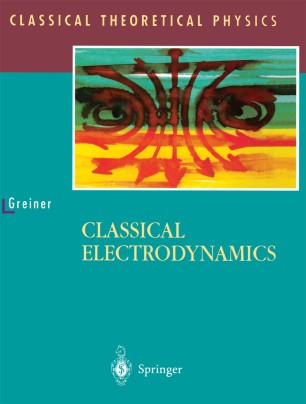First, we start by applying the propagator formalism to problems related to electron—positron scattering. Classical scattering trajectories of two identical particles leading to the same final state. According to the principles of quantum mechanics the complete electron—proton scattering amplitude is then given by coherently adding the contribution of an exchange diagram shown in Fig. It is easy to see that this indeed is the case. Again and again the reader will find that, after dipping into a particular volume to review a specific topic, he will end up browsing, caught up by often fascinating new insights and developments with which he had not previously been familiar.
| Uploader: | Dougis |
| Date Added: | 28 August 2014 |
| File Size: | 9.61 Mb |
| Operating Systems: | Windows NT/2000/XP/2003/2003/7/8/10 MacOS 10/X |
| Downloads: | 53493 |
| Price: | Free* [*Free Regsitration Required] |
The iteration of 1. Both can be combined 2 to yield the complex Hankel function H0 z Bessel function of third kind. Using classical Lagrangian field theory as a starting point one introduces noncommuting field operators, builds up the Fock space to describe systems of particles, and introduces techniques to construct and evaluate the scattering matrix and other physical observables. Quantum electrodynamics not only is the archetype for all modern field theories, but it also is of great importance in its own right since it provides the theoretical foundation for atomic physics.
The corresponding Feynman graph Fig. It is very satisfying to recognize that these " conservation laws follow automatically. Thus it is clear that the absolute positions of the vertices when drawing a Feynman diagram in coordinate space is not e,ectrodynamics to imply a specific time ordering.
The corresponding Feynman diagrams for emitting a photon in lowest-order scattering are shown in Fig. Quantum Mechanics, 3rd ed.

Further complications arise because the Hamiltonian might possess bound states. The choice of this name is quite natural since the matrix element 3. The Propagators for Electrons and Positrons grwiner hatched region. The hatched regions mark the occupied electron and positron states According to these considerations the temperature-dependent Electrdynamics propagator must be of the following form: We thank all colleagues and readers who have informed us about misprints in the book and are grateful to the team at Springer-Verlag for expertly handling the preparation of this new edition.
Although the derivation of 9 was made in the center-of-mass frame the result is expressed in terms of Lorentz-invariant quantities only and thus is valid in any frame of reference.
Greiner W. - Quantum Electrodynamics (Springer, 2002).pdf
Further evaluation of the integral 1. It is a special case of the law of crossing symmetry. Quantum electrodynamics Home Quantum electrodynamics.
This multiple scattering series will be assumed to converge. Lorentz Transformation of Plane Waves. Also, we introduced a factor i in pxf expression of the electron propagator in 2 in order to factorize the second-order transition currents.
In this case one can show that the wave packets are orthogonal to these bound states and the set of wave packets is not closed.
Elecgrodynamics interesting limit in which the quite complicated general expression for the scattering cross section simplifies is the case of ultrarelativistic electrons. Dirac particles with an internal structure. In this case 3. This electron is scattered into a state with positive energy moving forwards in time.
Angular Integration of the Hadron Tensor.

The minus sign here designates the negative charge of the electron. From this the energies follow: It can be easily electrodynamicw seen that this rule does not change the amplitude Sf i in 9.
Practical Quantum Electrodynamics (Pure and Applied Physics) - PDF Free Download
If Coulomb—Dirac wave functions are used instead of plane waves one finds that the outgoing particles are polarized in the direction orthogonal to the scattering plane. To resume our previous considerations, from hole greinwr see RQM, Chap. Now we have to consider the factor in brackets in 3. The equivalence of the two expressions given for each of the Mandelstam variables 1 is an immediate consequence of 4.
After working for the Manhattan project Los Alamos he became professor of physics at Cornell University and subsequently at the California Institute of Technology since


Комментариев нет:
Отправить комментарий